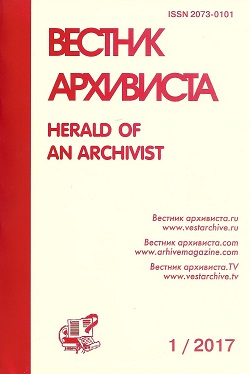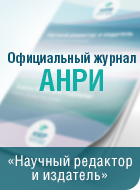Liberation of Auschwitz (Auschwitz-Birkenau) by the Red Army units on January 27, 1945: chronicle of events on the documents of the 60th General Army



Scientific article
doi 10.28995/2073-0101-2024-2-409-422
For citation
Komarov, Dmitrii E. (2024), “Liberation of Auschwitz (Auschwitz-Birkenau) by the Red Army units on January 27, 1945: chronicle of events on the documents of the 60th General Army”, Herald of an Archivist, no. 2, pp. 409-422. doi 10.28995/2073-0101-2024-2-409-422
Komarov, Dmitrii E., K. G. Razumovsky Moscow State University of Technology and Management – Vya’zma Branch, Vya’zma, Russia
Liberation of Auschwitz (Auschwitz-Birkenau) by the Red Army units on January 27, 1945: chronicle of events on the documents of the 60th General Army
Abstract
The article deals with the offensive operations of the 60th Soviet Army during the Sandomir-Silesian operation. On January 27, 1945 the soldiers of this army liberated the Polish city of Auschwitz and the concentration camp "Auschwitz-Birkenau", some sites of which were located in close proximity to the city. A whole direction in historical science is devoted to the study of Hitler's crimes in the concentration camps created by the Nazis. The article develops this direction in the part of analyzing the information about how and as a result of what the largest camp in the system of concentration camps created by Nazis in Europe stopped its functioning. The main goal of the presented work is to reconstruct the chronology of combat operations of the 60th Army units in the second half of January 1945, to determine their specifics and results. The methodological basis of the study was the principle of historical objectivity with reliance on source analysis of the complex of archival materials of the 60th Soviet Army and the units included in it, the level of the army - division - regiment. The involved documents, some of which are introduced into scientific circulation for the first time, allowed to restore the course of the offensive operation in the direction of Auschwitz. It is shown that the enemy resisted stubbornly, going into counterattacks, supported by artillery. However, the enemy could not hold the positions and retreated with significant losses. The intensity of the fighting is evidenced by the fact of death on the outskirts of the city of the commander of the 472nd rifle regiment, which was on the edge of the offensive operation of the division. The analysis of the documents allowed us to draw a number of conclusions that develop our knowledge about the role of the Red Army in the liberation of both the Auschwitz-Birkenau concentration camp and Poland as a whole. One of these should include an analysis of the combat composition of the 60th Army. Documents record the fact that more than half of the army was represented by new recruits. Among those conscripted in the second half of 1944, a significant percentage were mobilized from the western, recently liberated territories of the Ukrainian SSR, and the number of Ukrainians was almost identical to the number of Russians. The 100th Infantry Division, which took part in the direct fighting for Auschwitz, maintained the rapid pace of the offensive operation, which made it possible to liberate a significant part of the prisoners without giving the Nazis a chance to kill them. The documents of the 60th Army testify that most of the liberated from the total number of the camp contingent awaiting their fate were men of conscription age, citizens of the USSR. These documents record the fact that 3 thousand former prisoners of "Auschwitz-Birkenau" out of the total number of 5 thousand liberated were subsequently conscripted into the Soviet army and participated in the final defeat of Hitler's Germany and its allies.
Keywords
Historical sources, military archives, Great Patriotic War 1941-1945, Auschwitz, Auschwitz-Birkenau concentration camp, Sandomierz-Silesian operation, 60th Army, Holocaust Memorial Day
Download the article: komarov_doi
References
Aristov, S. V. (2017), Povsednevnaya zhizn' natsistskikh kontsentratsionnykh lagerei [Everyday life of Nazi concentration camps], Molodaya gvardiya, Moscow, Russia.
Vakhsman, N. (2015), Istoriya natsistskikh kontslagerei [History of Nazi concentration camps], Tsentrpoligraf, Moscow, Russia.
Wachsman, N. History of Nazi concentration camps. Moscow: Centerpoligraf" 2015.
Kozlov, M. M. (ed.) (1985), Velikaya Otechestvennaya voina. 1941-1945: Entsiklopediya [The Great Patriotic War. 1941-1945: Encyclopedia], Sovetskaya entsiklopediya, Moscow, Russia.
Ishkov, Yu. V., Abbyasova, Yu. A. and Golovina, E. O. (2017), ” Use of prohibited methods of research and taking biological material by medical workers of Nazi Germany from prisoners of concentration camps during the Second World War”, Vestnik of Astrakhan State Technical University, no. 2 (64), pp. 115-122.
Kovalev, B. N. (2011), Povsednevnaya zhizn' naseleniya Rossii v period natsistskoi okkupatsii [Everyday life of the Russian population during the Nazi occupation], Molodaya gvardiya, Moscow, Russia.
Malysheva, E. M. and Aristov, S. V. (2017), “Concentration camps of the Third Reich: document storage centers and source base of the problem research”, Voenno-istoricheskii zhurnal, no. 9, pp. 80-88.
Malysheva, E. M. (2010), Sotsial'naya istoriya Velikoi Otechestvennoi voiny: granitsy interpretatsii v postizhenii ob"ektivnoi istiny [Social history of the Great Patriotic War: the boundaries of interpretation in the comprehension of objective truth Social history of the Great Patriotic War: the boundaries of interpretation in the comprehension of objective truth]. Chelovek i voina: nizhegorodtsy v gody Velikoi Otechestvennoi voiny (1941-1945 gg.) [Man and War: Nizhny Novgorod citizens during the Great Patriotic War (1941-1945)], Komitet po delam arkhivov Nizhegorodskoi oblasti; Volgo-Vyatskaya akademiya gosudarstvennoi sluzhby, Nizhnii Novgorod, 170 p.
Polyan, P. M. (2010), Mezhdu Aushvitsem i Bab'im Yarom. Razmyshleniya issledovaniya o Katastrofe [Between Auschwitz and Babi Yar. Reflections of the research on the Shoah], ROSSPEN, Moscow, 583 p.
Fedorov, G. V. and Nagornaya, M. S. (2015), “Liberation of the concentration camp Auschwitz (Auschwitz-Birkenau): between political conjuncture and historical memory”, Vestnik soveta molodykh uchenykh i spetsialistov Chelyabinskoi oblasti, no. 2 (9), pp. 31-34.
About the authors
Dmitrii E. Komarov, Doctor of Historical Sciences, Professor, K. G. Razumovsky Moscow State University of Technology and Management (Vya’zma Branch), Russian Federation, Associate Professor, Vyazma, Russia, 8-910-78017-80, This e-mail address is being protected from spambots. You need JavaScript enabled to view it , This e-mail address is being protected from spambots. You need JavaScript enabled to view it
The article was received in the editorial office on 1.11.2023, recommended for publication on 20.03.2024.











